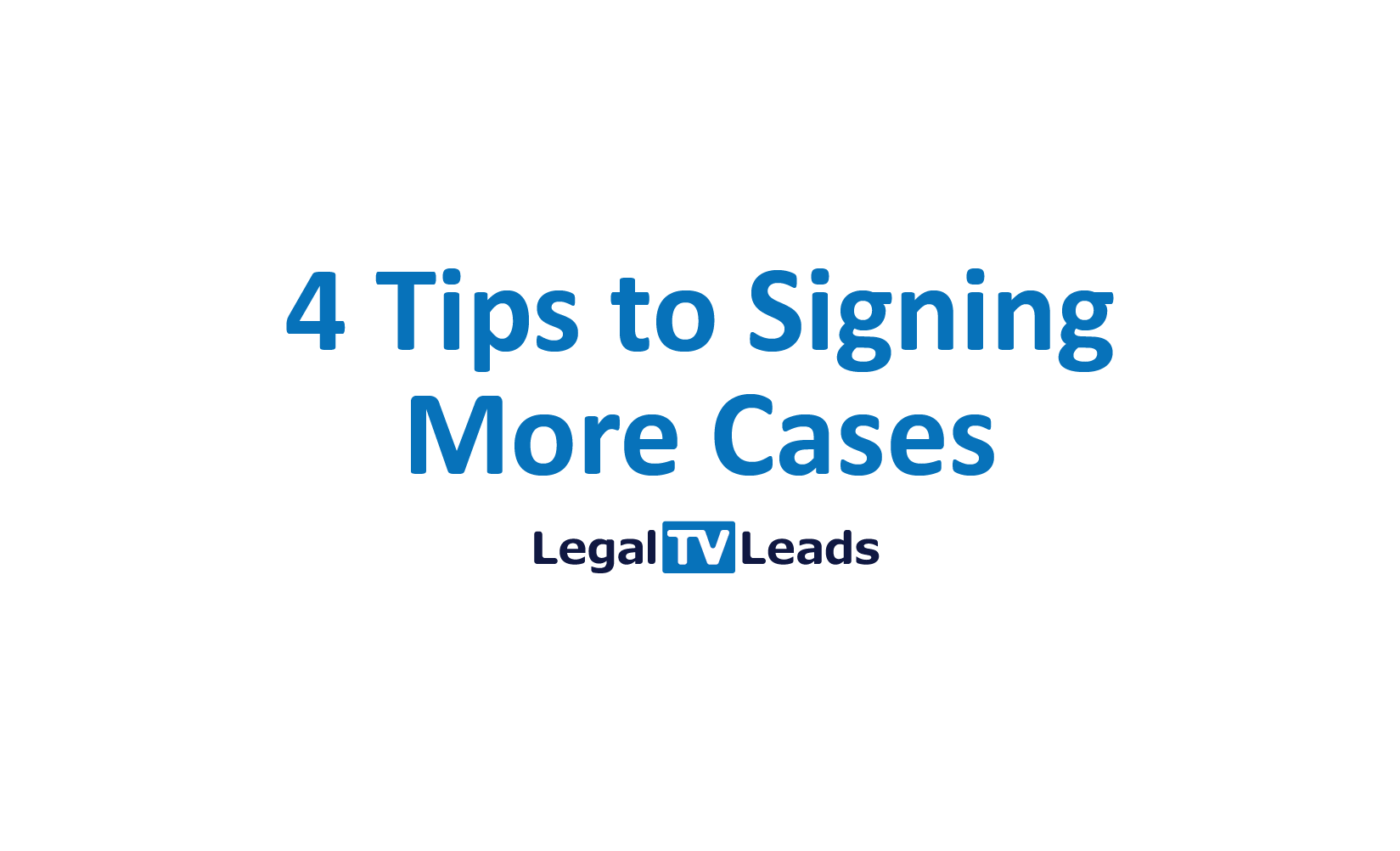Over the last several years, Intake & Conversion has become on the forefront of personal injury, and rightfully so, it is the fastest and most cost-effective way to grow your caseload. You tighten up your intake and then you sign more cases. Sounds simple, right? It actually is. It all starts with your mindset, you must treat your intake staff like a sales team. Regardless who answers calls at your firm; a receptionist, paralegal, an attorney, yourself or a dedicated intake person (which is ideal) – they must do it consistently in order to hone their skills and really master the task of signing clients. It was best said by Zig Ziglar in his famous quote “Repetition is the mother of all learning.” The following 4 intake tips may come as news to you or serve as a refresher course, if implemented on a every intake call they’re sure to help you convert more leads and grow your caseload – without spending a dime more on marketing.
Step 1: Empathy
This is the most important thing you can do on an intake call. If you take nothing else from this article, then know this, pour on the empathy. People want to be heard, they want to be understood and they want to know that you care, especially after they’ve suffered a traumatic accident. You can do everything else wrong on the call but if you show empathy and convey to the claimant that you really care, then you are in. Period. It’s like the forgetful waiter who messes up your meal, but he is just so nice and genuine, he’s apologetic and he really feels bad about your meal. More often than not, you will let it slide and give him a good tip anyways. Exhibiting empathy is the most important aspect of an intake call and should be shown several times throughout every call. This one thing will make the biggest impact on your intake conversion.
Step 2: Rapport
It is often said that people do business with people they like, which makes building rapport all the more important when it comes to intake. Building rapport means finding commonality between you and the claimant and most importantly, getting them to like you. You can build rapport upon any topic: the weather, the car they drive, where they live or the even the game that was on last night. The main objective is for you to find things in common with the claimant and draw parallels between you both. This is done by asking questions during the intake and relating that back to yourself. Think of a cocktail party where you don’t know anyone. You mingle and have small talk until you find some common ground with folks. This is done by asking open-ended questions about literally any topic, best of which is about them. Most people’s favorite topic is themselves, so feed that need and ask them questions about them; their lives, their family, their accident, etc. And remember, they need to like you before they trust you and they need to trust you before they hire you.
Step 3: Trust
Transactional Trust is the ability to gain the trust of your potential client. This is done by reassuring them that they called the right firm and that you will take good care of them. Tell them that you’ve helped a number of clients with the same type of accident and that your team is well-versed in this type of case. Let them know that you are here to help and be sure to educate them on the process and what they can expect. Education is key, make sure you answer ALL of their questions and inform them on the process. Don’t rush them off the phone, treat them like family and take your time by reassuring them that they did the right thing by calling your firm. This will result in you conveying to the claimant that YOU are the expert and that you know what you’re doing and that you are truly there to help. They will, in turn, follow your lead and hire your firm.
Step 4: Close
Lastly, you need to close, which means “ask for the business”. Even if the intake conversation wasn’t your best performance, you should still ask them sign up with your firm. We recommend you use the Assumptive Close, which means that you simply assume they are going to do business with you and something like “Here are the next steps to working with our firm” or “Here’s how the process works so that we can begin working on your case immediately.” You’ll be surprised at how many firms forget to do this and let claimants walk right out the door. Remember that potential claimants are marketed to dozens of time per day online and offline, so you need to capitalize on the fact that you have their attention now and you need to get them off the street. I recommend d a test/email retainer while you are on the phone with them so you can walk them through your docs and handle any objections that may arise. If that is not an option, then a face-to-face is second best. Make it a habit to ask for the business at the end of every intake call and you will be shocked at how many of them will follow suit and sign up with you.
Over the years, I’ve seen thousands of law firms perform intake, from the very best to the worst, and the difference between them is the implementation of these 4 steps. The best intake firms treat their law firm like a business and their intake department like the sales team. They use custom greetings, have weekly sales meetings and they refine their intake process on a regular basis. The worst firms don’t have a process. You can measure a firm’s intake capabilities by how much time that they spend on the subject; thinking about it, talking about it, strategizing, reviewing calls and striving to improve. These small changes can mean the difference between you signing or missing the case that can change the trajectory of your practice, so put the time in, you will see your conversion increase and your caseload accordingly. I wish you good luck and more importantly…good intake.

Mark Sullivan
CEO Legal TV Leads



